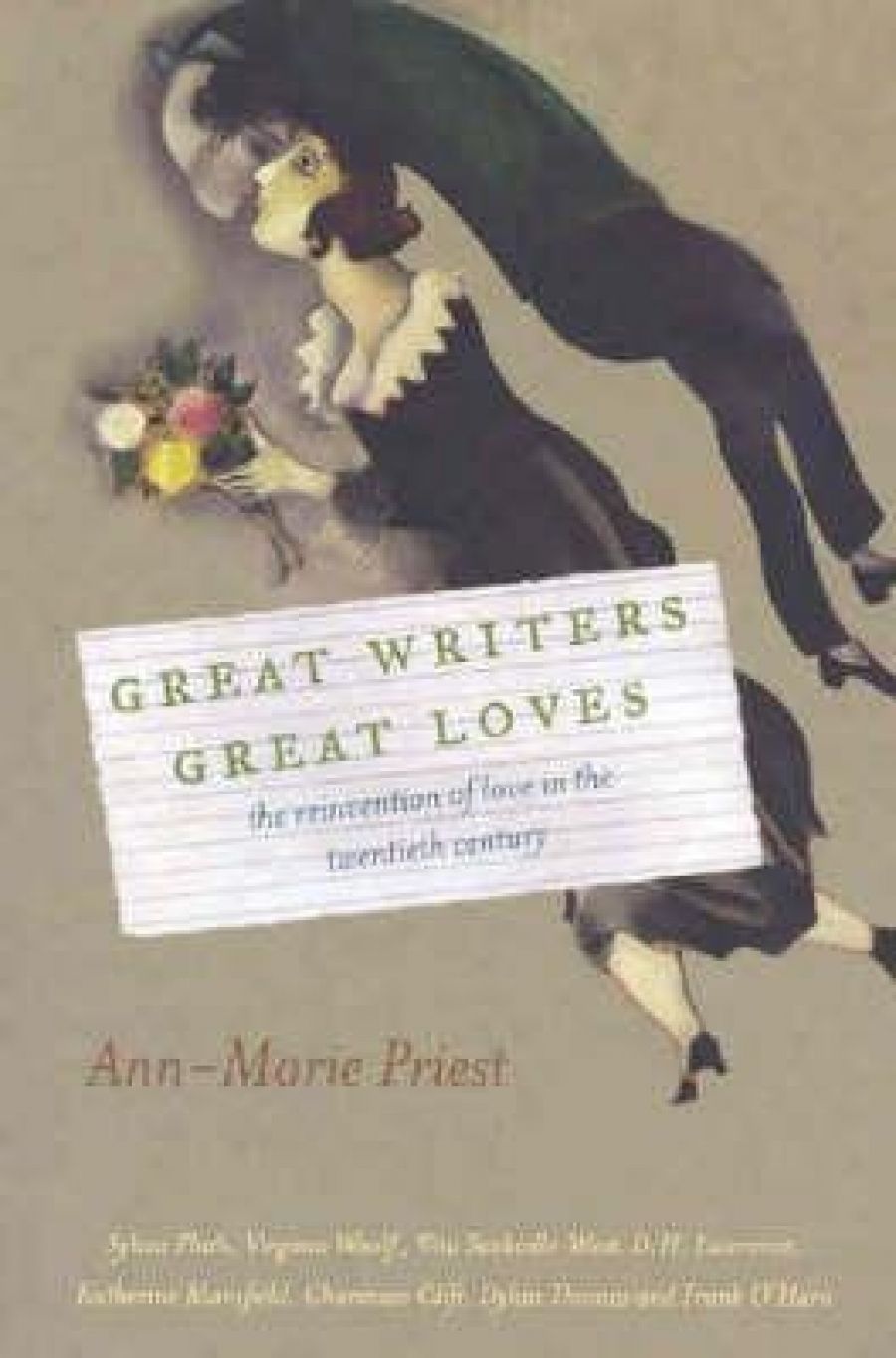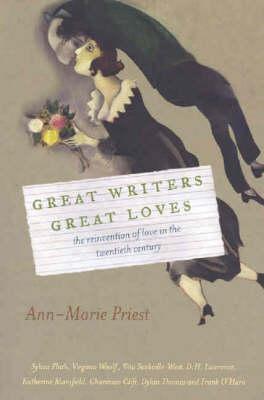
- Free Article: No
- Contents Category: Non-fiction
- Review Article: Yes
- Article Title: Making the bed
- Online Only: No
- Custom Highlight Text:
If this is love, then we are all in trouble. Addiction, infidelity, cruelty, violence, obsession, depression, repression, jealousy, impotence, the neglect of children and a whole lot of hysterical personal correspondence are features of the love affairs conducted by the eight writers who are the subject of this disconcerting book.
- Book 1 Title: Great Writers Great Loves
- Book 1 Subtitle: The reinvention of love in the twentieth century
- Book 1 Biblio: Black Inc., $29.95 pb, 298 pp
- Book 1 Cover Small (400 x 600):

- Book 1 Cover (800 x 1200):

What a collection of horrible stories. Four are Bloomsbury, four are not. Only one – the unconventional open marriage enjoyed and endured by pioneering English swinger and drag king Vita Sackville-West and her diplomat husband, Harold Nicolson, for a remarkable forty years – has anything resembling a happy ending. The rest are diabolical. Sylvia Plath, Virginia Woolf and Charmian Clift take their own lives. Dylan Thomas drinks himself to death. Poet Frank O’Hara appears to be heading that way too, but he is hit by a jeep and dies from the resulting injuries. The remaining two writer–lovers, D. H. Lawrence and Katherine Mansfield, die from tuberculosis. At the time of their early deaths, Lawrence is impotent and Mansfield is chaste, spending ‘long hours in the cowshed watching the cows’ as a member of a spiritual community in rural France.
At least Lawrence and Mansfield do not die alone. Mansfield, a New Zealander who is ‘known as an innovator, and master, of the short story’, has the company of her great male love, editor and critic John Middleton Murry. The faithless Murry has all but abandoned Mansfield as her illness worsens, but he does manage to respond to her final request for a visit. Steadfast Ida, the school friend whom Katherine considered rather condescendingly to be her ‘wife’, is not summoned. Perhaps Mansfield did not consider a doormat necessary for her journey into the next life. Lawrence is cared for by his estranged wife, Frieda. As well as having the obligatory extramarital affairs, the pair were famous fighters. During some of these arguments, Lawrence hit Frieda. Mansfield and Murry were friends. ‘He beat her – he beat her to death – her head and face and breast and pulled her hair,’ Mansfield writes of one such argument.
In one of the oddest scenes in the book, Ann-Marie Priest recounts how Frieda tended Lawrence in his last days: ‘first in a sanatorium and then at home, and was by his bed holding his ankle as he died.’ The clasping of an ankle does not appear to be the final word in tenderness, does it? Tenderness, kindness and loyalty are three of the many qualities associated with love that are absent from this book, a project that proves that the humanity, brilliance and insight evident in a writer’s work can be all but absent in their private life. A great writer can be a terrible lover, as the antics of Lawrence, Mansfield and Thomas suggest.
Priest’s essays draw on a wide range of diaries, letters and biographies. The source material is juicy and voluminous (although maybe there were other people, aside from the Bloomsbury set, doing interesting things in and out of bed in the early twentieth century), and Priest’s tone is playful and informal. Some stories, especially the adventures of Vita and her great passion Violet, are enjoyable-enough romps through grand obsessions (rather than great loves).
The book is pitched at the general reader. Each chapter ends with three sections titled ‘What she or he is famous for’, ‘Worth reading’ and ‘More information’. I liked this idea and found the listings useful for O’Hara, a mid-twentieth century American poet with whose work I was unfamiliar.
My problem, therefore, is neither the research nor the writing. What is difficult to accept is the way the complicated and often unpleasant material is presented matter-of-factly as case studies of the ‘reinvention of love’. This claim is insufficiently analysed. Indeed, given the cruel facts of many of the affairs described, the title could just as easily be the ‘reinvention of hate’, ‘how writers lie’ or – in the case of the women writers – ‘how housework sours love’.
All the writers sent love letters sprinkled with phrases worthy of any schmaltzy top-twenty hit – ‘hot volcano depths’, ‘a love like ours’, threats to ‘die from despair’ – but their actions often said something quite different. For example, Priest observes that, while Dylan Thomas was bingeing on sex during an American literary tour, he continued to write over-the-top letters to his wife Caitlin. ‘I love you as I have never loved you, oh please remember me …’ and so on.
Priest describes the love affairs of Clift and George Johnston, Plath and Ted Hughes, and Mansfield and Murry as trend-setting examples of the ideal of companionate marriage, that is, the union of ‘lovers who are also friends and partners’. Priest argues that this ideal, along with its betrayal, is ‘an essential part of the mythology of love’ that developed in the twentieth century. The trouble with these stories is that the male writer’s work is aided by the many benefits of a wife, while the woman’s is not. The partnerships were never equal. As Mansfield observed: ‘Someone’s got to wash dishes and get food.’ No matter how bohemian the life, eventually a bed must be made before a couple can lie in it.


Comments powered by CComment